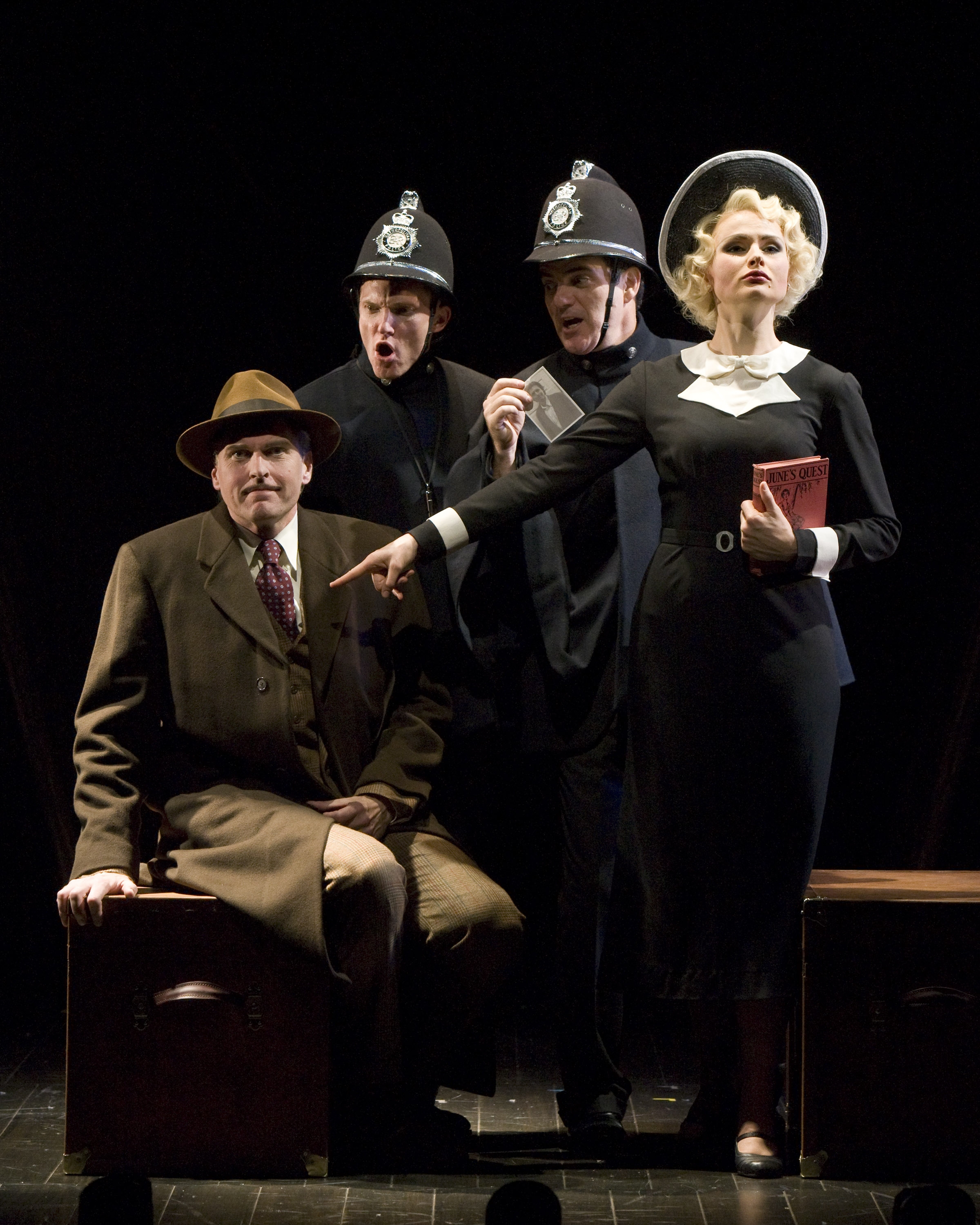Dialect Coach Stephen Gabis of ‘The 39 Steps’
Posted on March 20, 2010 at 8:00 am
The 39 Steps is a riotously hilarious theater experience based on the classic Alfred Hitchcock movie, itself based on a popular 1915 thriller by John Buchan. The play has 150 zany characters — all played by four actors. The show features an on-stage plane crash, handcuffs, missing fingers and some good old-fashioned romance as the hero and heroine go on a chase that takes them through Scotland and into a London music hall. The touring stage version is opening in Washington DC this week.  Four actors performing 150 parts means not just a lot of split-second costume changes but a lot of lightning-fast changes of character, voice, and accent, what dialect coach Stephen Gabis calls “a living, breathing actor’s nightmare.”
Four actors performing 150 parts means not just a lot of split-second costume changes but a lot of lightning-fast changes of character, voice, and accent, what dialect coach Stephen Gabis calls “a living, breathing actor’s nightmare.”
I spoke to Mr. Gabis about working on the show and what makes accents so important in creating a character. Part of the fun of talking to him was the way he almost sub-consciously slipped in and out of a dozen different accents to illustrate his comments.
This has to be one of the most accent-intensive challenges of any theatrical production.
And there’s an understudy who has to cover not just the main character but all of the other roles as well! From my vantage point, it is like boot camp for the first week, about the dialect. It really has to become muscle memory. Everyone has a different skill set; everyone’s brain is complicatedly and differently wired for this sort of thing. Some people have a kind of mimicry chip and can pick it up on their own. Some are good at some accents and not good at others. For this particular piece, a consistent problem is for the Scots characters. You have the Highlands accent and the Glaswegian girl and the guys on the platform in Edinburgh and the bobbies that are chasing them, keeping them out of Ireland! Americans have some misconception that mixes Irish and Scots accents.
Can you give me an example of the differences?
You’re going to say any of your sounds like “love” or “come” or “mother” would be “loove” if you’re Irish but the Scots would say it like an American. I got “te” go instead of I got “to” go. You don’t have to roll your r’s, you just have to be able to tap them. That over-emphasized rolling would be exaggerated, what I call “music hall Scots.” That’s what performers like Harry Lauder used to do, for emphasis and to be entertaining. The R takes that tap when you’re in the position to make a D. American speech is very lateral. Words kind of lean on each other. More legato. There’s a bit of a bounce to this stuff. This play exaggerates some of the speech in the text. And Scots will repeat what the other person says for emphasis.
So it isn’t only pronunciation, then, it’s cultural.
Yes! For instance, knowing the relationships between the different cultures that live together and the effect they have on each other. And whether the person is educated or not is important, too, not just where they live. The Glasgow girl in this show sounds like one of my classmates when I was in drama school, Sharman Macdonald, that soft voice — she is the mother of Kiera Knightly.
Were you always interested in accents?
I grew up around a lot of different accents and I’m a mimic. I studied acting but I am an autodidact. I resisted learning all of the phonetic alphabet stuff in drama school but had to discipline myself when I began to coach and teach.
Are accents as important as they once were in identifying people and their backgrounds?
Things are mushing together — media has made accents get a bit homogenized and put into a blender. I have to be really attuned to when it is taking place. This play is set in the 30’s. But I can’t overdue the authenticity, either. It has to be understandable for the audience. You don’t want a museum piece, too mannered, like Colin Clive in “Frankenstein.” The accent can’t be a distraction.
